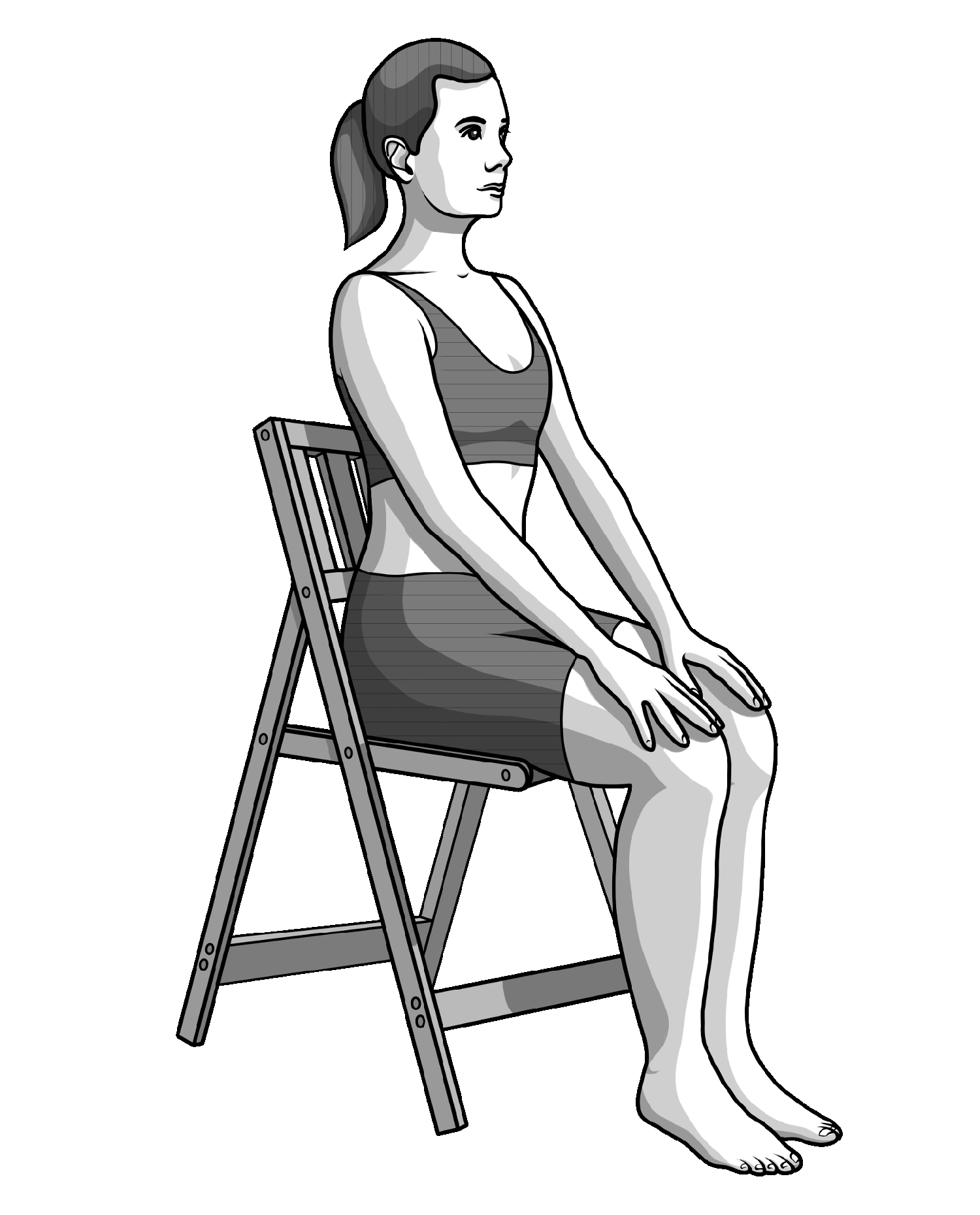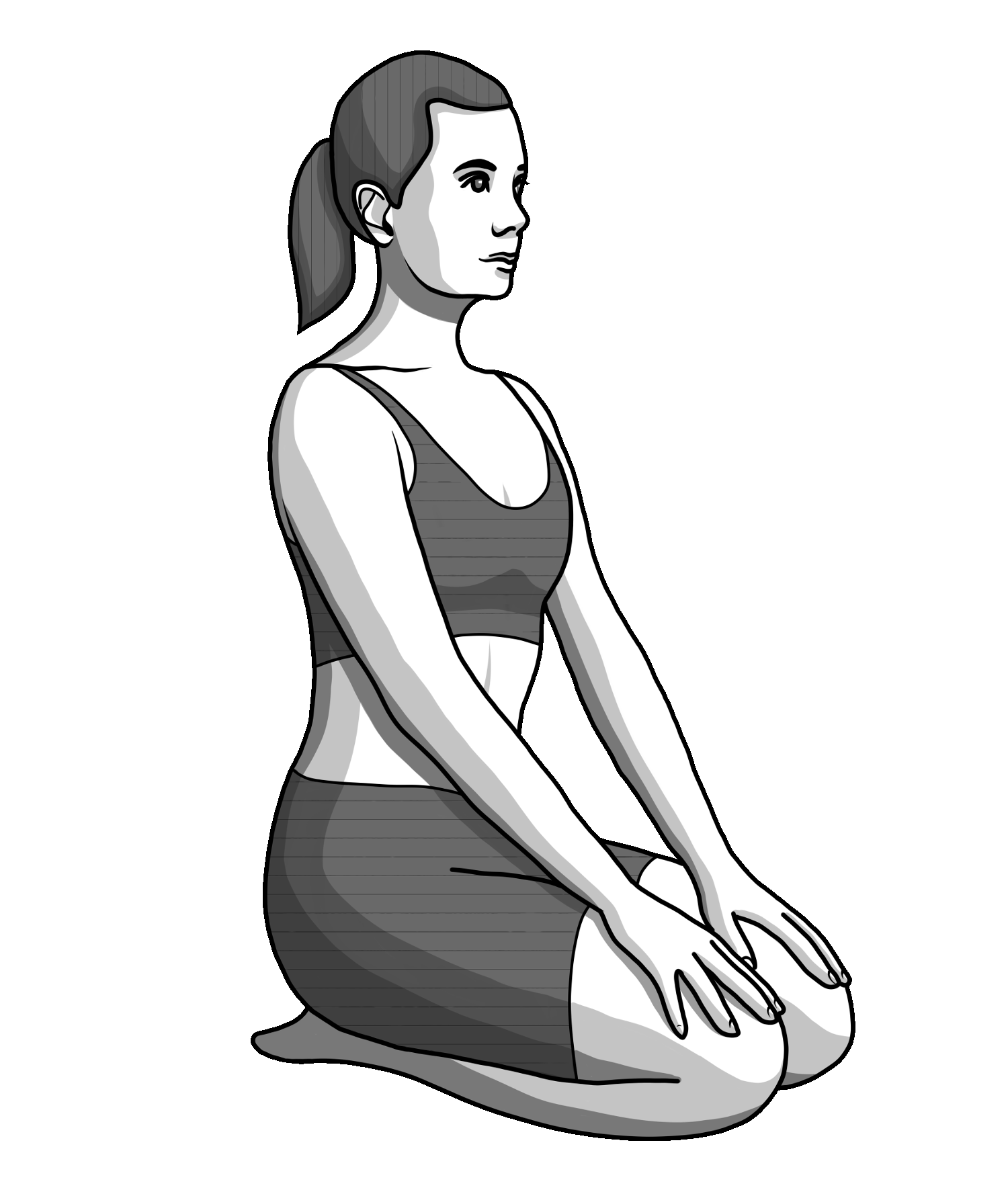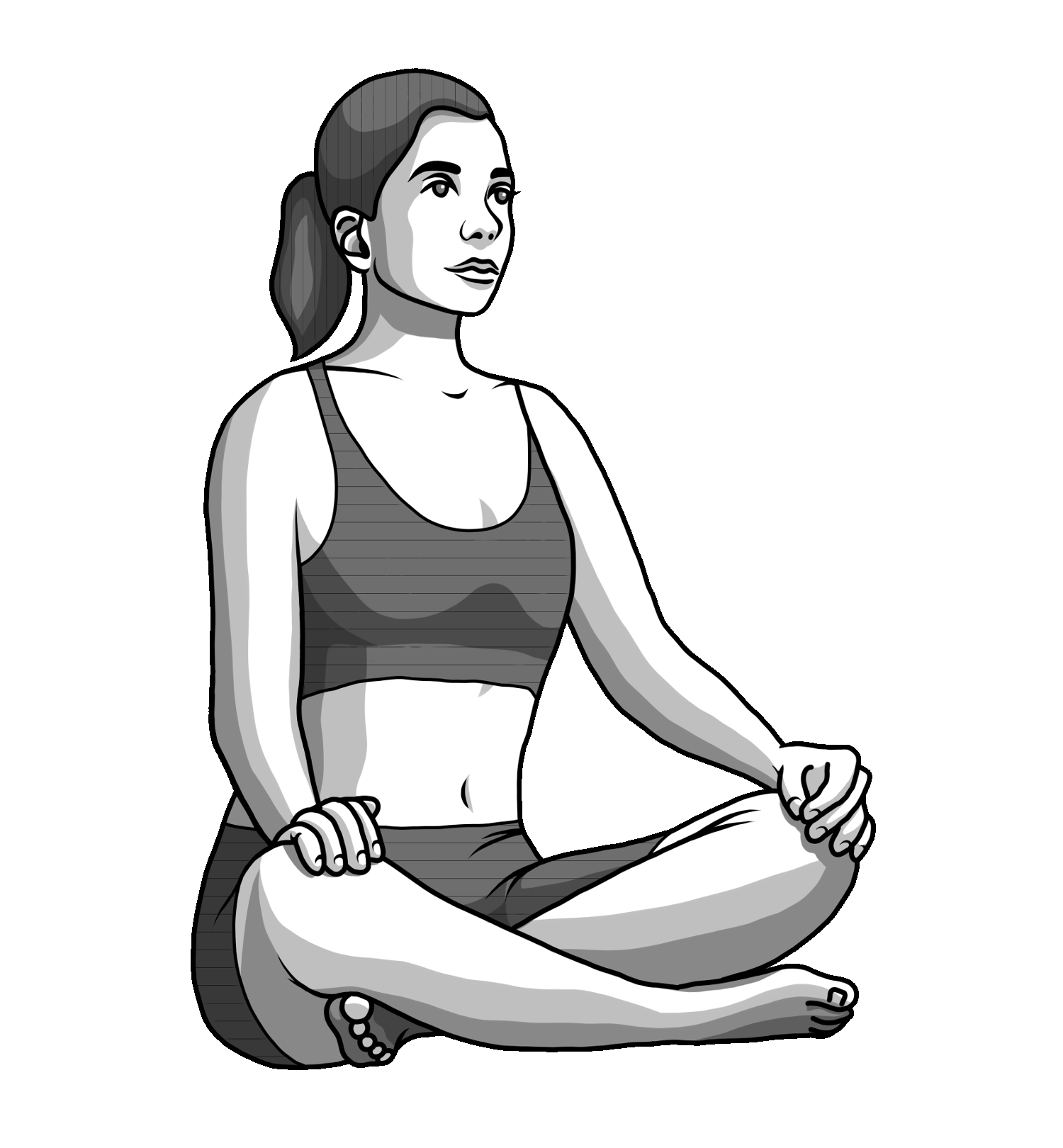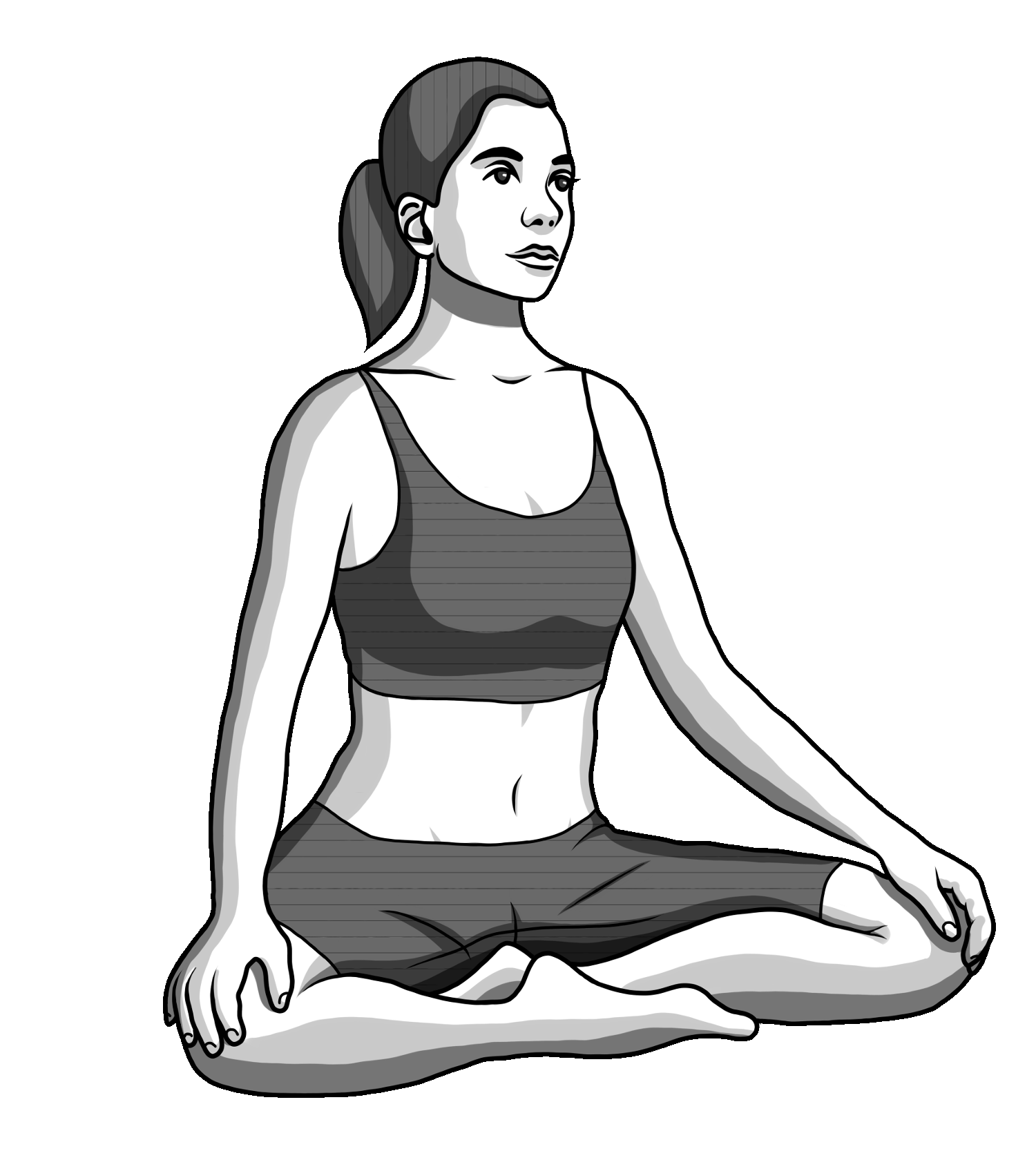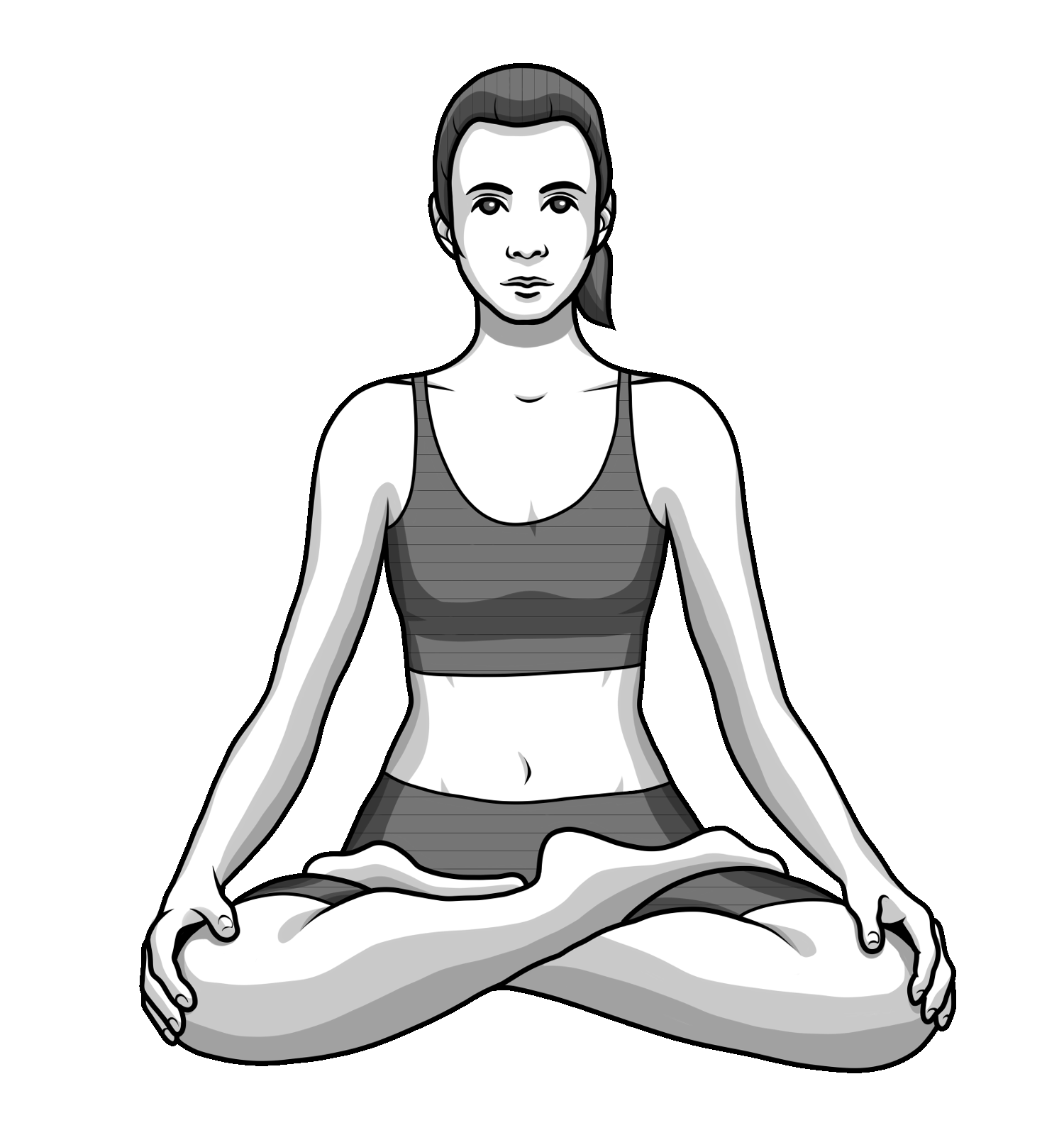კომფორტული პოზიცია
თქვენ შეგიძლიათ აირჩიოთ რომელიმე ქვემოთ მოყვანილი პოზიცია, თქვენი შეხედულებისამებრ, და თქვენ უნდა შეინახეთ უკანა დონეზე თქვენი დასრულებამდე.breathing gymnastics სესიის.
Contents
სხდომა
Any straight back position works: sitting on a chair, on your heels (Vajrasana), in "half-lotus" (Ardha Padmasana), "lotus on a pillow" (Siddhasana), or "true lotus" (Padmasana). ეს უკანასკნელი საუკეთესოდ ითვლება პრანაიამა ის პრაქტიკაში.
On a chair
You sit on a chair so your feet are flat on the floor and your knees are in line (or slightly lower) with your hips. Adjust the chair height if needed. Keep your hips far back in the chair, your back straight and your chin high. Your arms rest on your laps.
On your heels
Rest your buttocks on the soles of your feet, with your feet and thighs touching. Untuck your toes and press the tops of your feet firmly and evenly along the floor. Keep your back straight, trying to be as tall as possible. You arms rest on your laps. Do not bend your head.
- You may put a folded blanket beneath your legs to feel more comfortable.
- This position is named Vajrasana in Sanskrit, meaning "Adamant pose" or "Thunderbolt pose".
- If your feet are separated and the buttocks are on the floor, it is Virasana, or "Hero pose". You may also use it if it feels comfortable for breathing gymnastics.
Simple crossed leg position
Sit down on a floor on on a Yoga mat. Make sure your spine is straight and aligned with the head and neck. Cross your shins, widen your knees, and slip each foot beneath the opposite knee as you bend your knees and fold the legs in toward your torso. Your arms rest on your laps.
- In Sanskrit, this body position is called Sukhasana, meaning "Comfortable pose", or "Pleasure pose". It is not a stable pose, as you can slouch easily, but it is a good solution for the people with knee problems, or for short training sessions.
- For all crossed leg positions, it is a good idea to start mastering them with folded blankets or cushions for some extra support.
Crossed leg position
Sit straight with your feet close in to the perineum but resting on the ground. Your ankles are not crossed. You try to look as tall as possible, meaning your spine is erect. Your arms rest on your thighs.
- This position is called Muktasana in Sanskrit, meaning "Liberation pose", or Ardha Siddhasana ("Half-accomplished pose"). It is a simplified version of Siddhasana ("Accomplished pose"), yet it is quite stable and easy to stay in for a long time.
- In Siddhasana, ankle bones are touching and the heels are above one another with the top heel pressing the pubis directly above the genitals. This position is claimed to foster the powers or siddhis to the yogi who practices it daily for 12 years (by Iengar).
- If you tuck the toes of your top leg between the calf and thigh muscles of your bottom leg, it is another crossed leg position called Swastikasana ("Auspicious pose"). It is the first of 84 asanas described and illustrated in Jogapradipika.
Half lotus
Take a simple crossed leg position. Then leave one leg bent and resting on the ground, and put the other foot on top of the opposite thigh with its sole facing upward and heel as close to the abdomen as possible. Again, your body position is straight and your arms rest on your thighs or laps.
- In Sanskrit it is called Ardha Padmasana - "Half lotus pose". It is a simplified version of "Lotus pose", yet it is quite stable. Some teachers state this position is no less powerful than the "true lotus".
True lotus
Take a simple crossed leg position. Put one foot on top of the opposite thigh with its sole facing upward and heel close to the abdomen, and the other foot - on the opposite thigh as symmetrically as possible. You may use a folded blanket or a cushion for your knees to feel more comfortable, especially if you are new to this position. Your arms rest on your laps.
- In Sanskrit it is named Padmasana, the "Lotus pose", and is considered as one of the most stable and powerful poses for Pranayama.
- A figure seated in lotus position on a lotus flower is shown on dinar coins of the emperor Chandragupta II, who reigned c. 380–c. 415 AD.
იტყუება
ტყუილი თქვენს უკან დახვეწილი გზა (შავასანა) შეიძლება იყოს კარგი არჩევანი თუ ვერ შეინარჩუნებს სწორი უკან მთელი სუნთქვის სხდომა. ასევე სასარგებლოა რელაქსაციისთვის და იმ შემთხვევაში, თუ პრაქტიკაში იძინება, უფრო სწრაფად იძინებს.
მუდმივმოქმედი
სტენდი ასევე ნორმალურია, მაგრამ ეს გარკვეულწილად ამცირებს ტრენინგის ეფექტურობას, რადგან საჭიროა უფრო მეტი ენერგიის დახარჯვა სწორი პოზიციის შესანარჩუნებლად.
გასეირნება
Some patterns can be, and even are recommended to be practiced in movement, like Vrajana Pranayama.
NB
ტრენინგის დაწყებამდე გთხოვთ, დარწმუნდეთ იმაში, რომ თქვენი ტანსაცმელი არ არის ძალიან მჭიდრო და მათ ხელს არ უშლის ხელს თქვენს სხეულსbody while making a full inhaling აირჩია თანამდებობაზე.
